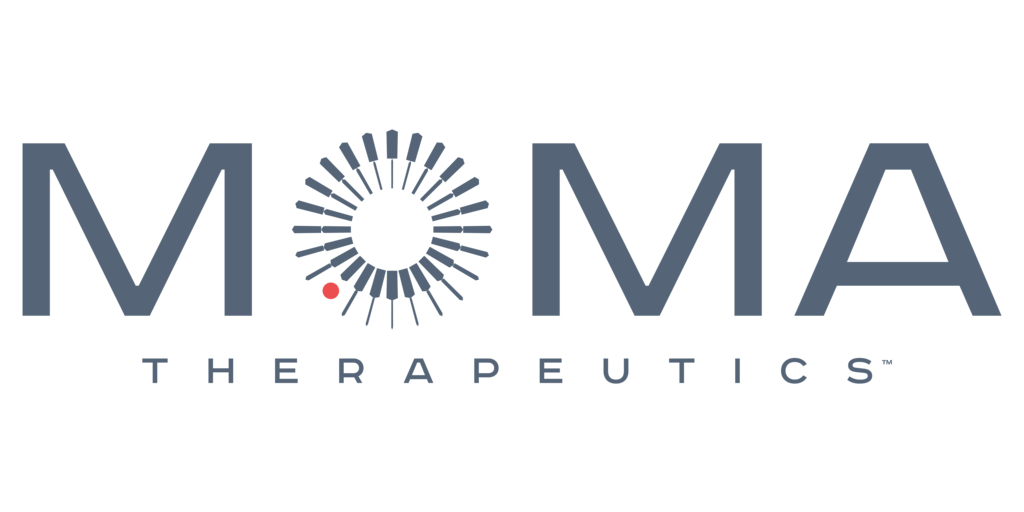- MOMA in-licenses next-generation selective PARP1 inhibitor, now known as MOMA-989, with plans for single agent and combination development, including with MOMA-313 –
- Company provides Phase 1 clinical trial guidance for MOMA-313, a highly potent and selective polymerase theta (Polθ) inhibitor –
- Company confirms clinical path for MOMA-341, a highly potent and selective Werner helicase inhibitor with a novel chemical scaffold –
CAMBRIDGE, Mass.--(BUSINESS WIRE)--MOMA Therapeutics, a clinical-stage biopharmaceutical company discovering and developing a new generation of precision therapeutics, today announced the in-licensing of a next-generation selective PARP1 (poly ADP-ribose polymerase) inhibitor, now known as MOMA-989. The company also provided an update on the clinical progress of Polθ inhibitor MOMA-313 and outlined the clinical path for Werner inhibitor MOMA-341.


“The addition of this selective PARP1 inhibitor to our portfolio solidifies our lead asset focus on the DNA damage response,” said Asit Parikh, M.D., Ph.D., chief executive officer of MOMA. “Our conviction in the potential for achieving practice-changing efficacy by combining MOMA-989 with our Polθ inhibitor catalyzed the licensing deal. It puts MOMA in position to generate multiple impactful clinical datasets across three thematically linked assets over the next two years.”
MOMA-989: Selective PARP1 inhibitor
MOMA-989 is an oral, highly potent, brain-penetrant development candidate with a potentially best-in-class compound profile. Under the terms of the exclusive license agreement with a U.S.-based biopharmaceutical partner, MOMA receives global rights to MOMA-989 and assumes responsibility for all further research, development and commercialization of the asset and related follow-on molecules.
Selective targeting of PARP1 has demonstrated significant potential for patients with tumors displaying homologous recombination deficiency (HRD). MOMA anticipates filing an IND with the U.S. FDA by the end of 2025. The company plans to develop MOMA-989 for patients with HRD, both as single agent and as part of a mechanistically synergistic combination with MOMA-313. Following successful IND clearance, early single agent efficacy data is anticipated in the second half of 2026.
MOMA-313: Polθ helicase inhibitor
MOMA-313 is a potentially best-in-class, highly potent and selective Polθ helicase inhibitor with a favorable emerging safety profile. This profile lends MOMA-313 to broad combinability with other targeted agents including antibody drug conjugates, radioligand therapeutics, PARP inhibitors, and select chemotherapies. Preclinical data demonstrate that combining a PARP inhibitor with a Polθ inhibitor in tumors harboring alterations in HRD has unique potential to deepen and prolong therapeutic responses.
MOMA-313 is currently in a Phase 1a dose escalation study designed to evaluate its potential as monotherapy and in combination with olaparib, an approved, non-selective PARP inhibitor (NCT06545942). An initial readout of olaparib combination efficacy data is anticipated in mid-2026, with development of the proprietary combination with MOMA-989 to initiate in late 2026.
MOMA-341: Werner helicase inhibitor
The company remains on track to file an IND for MOMA-341 during the first quarter of 2025. MOMA-341 is a highly differentiated oral, potent and selective, covalent Werner helicase inhibitor with a novel chemical scaffold that was identified via the company’s KNOMATIC TM platform. The company plans to assess the potential of MOMA-341 as a treatment for patients with cancers demonstrating microsatellite instability (MSI-H). Following successful IND clearance, MOMA anticipates an initial readout of early single agent efficacy data in mid-2026.
About MOMA Therapeutics
MOMA Therapeutics is a clinical-stage, next-generation precision medicine company dedicated to targeting highly dynamic proteins that underlie human disease via an oral, small molecule approach, utilizing its proprietary KNOMATICTM platform. The platform is designed to exploit key vulnerabilities inherent to all dynamic proteins, namely their dependence on well-coordinated, stepwise changes in protein conformation. By focusing on genetically validated targets with high translation potential, MOMA is rapidly advancing its pipeline toward responses in the clinic. MOMA has existing discovery partnerships with Roche and Bayer, as well as a wholly owned pipeline. For more information on MOMA, go to www.momatx.com.
Contacts
Katie Engleman
katie@1abmedia.com




